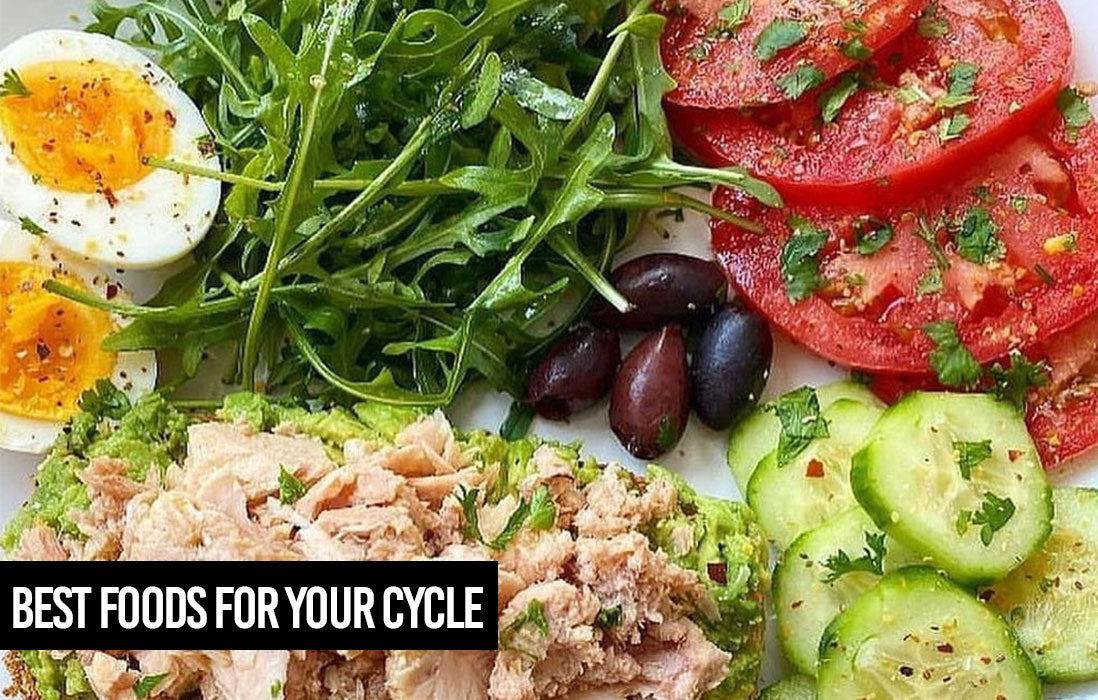BEST FOODS TO EAT WHEN YOU'RE ON MENSTRUAL CYCLE
- by Hotte Berri

When it comes to managing your diet during your menstrual cycle, incorporating nutrient-rich foods can help support your overall well-being and potentially alleviate some of the common symptoms. While individual preferences and needs may vary, here are some foods that are generally beneficial during menstruation:
Iron-rich foods: Due to blood loss during menstruation, it's important to replenish iron levels. Include foods like lean red meat, poultry, fish, spinach, kale, lentils, beans, and fortified cereals in your diet.
Magnesium-rich foods: Magnesium can help reduce cramping and improve mood. Good sources include dark chocolate, nuts (almonds, cashews), seeds (pumpkin, flax), legumes, avocados, and leafy greens.
Calcium-rich foods: Calcium supports muscle function and can help reduce menstrual pain. Include dairy products (milk, cheese, yogurt), leafy greens (kale, broccoli), fortified plant-based milk, tofu, and almonds.
Omega-3 fatty acids: Found in fatty fish like salmon, mackerel, and sardines, as well as flaxseeds, chia seeds, and walnuts, omega-3 fatty acids have anti-inflammatory properties and may help reduce cramps.
Fiber-rich foods: Whole grains, fruits, vegetables, legumes, and seeds provide fiber, which supports digestion and helps regulate hormonal balance.
Vitamin B6-rich foods: Vitamin B6 can help alleviate bloating and mood swings. Include foods like bananas, salmon, chicken, nuts, seeds, and whole grains.
Herbal teas: Chamomile, ginger, and peppermint teas can help soothe cramps and promote relaxation.
Remember, it's essential to listen to your body and make choices that suit your specific needs and preferences. Maintaining a balanced diet and staying hydrated are key factors in supporting overall well-being during your menstrual cycle. If you have any specific dietary concerns or health conditions, it's always a good idea to consult with a healthcare professional or a registered dietitian.
Iron-rich foods: Due to blood loss during menstruation, it's important to replenish iron levels. Include foods like lean red meat, poultry, fish, spinach, kale, lentils, beans, and fortified cereals in your diet.
Magnesium-rich foods: Magnesium can help reduce cramping and improve mood. Good sources include dark chocolate, nuts (almonds, cashews), seeds (pumpkin, flax), legumes, avocados, and leafy greens.
Calcium-rich foods: Calcium supports muscle function and can help reduce menstrual pain. Include dairy products (milk, cheese, yogurt), leafy greens (kale, broccoli), fortified plant-based milk, tofu, and almonds.
Omega-3 fatty acids: Found in fatty fish like salmon, mackerel, and sardines, as well as flaxseeds, chia seeds, and walnuts, omega-3 fatty acids have anti-inflammatory properties and may help reduce cramps.
Fiber-rich foods: Whole grains, fruits, vegetables, legumes, and seeds provide fiber, which supports digestion and helps regulate hormonal balance.
Vitamin B6-rich foods: Vitamin B6 can help alleviate bloating and mood swings. Include foods like bananas, salmon, chicken, nuts, seeds, and whole grains.
Herbal teas: Chamomile, ginger, and peppermint teas can help soothe cramps and promote relaxation.
Remember, it's essential to listen to your body and make choices that suit your specific needs and preferences. Maintaining a balanced diet and staying hydrated are key factors in supporting overall well-being during your menstrual cycle. If you have any specific dietary concerns or health conditions, it's always a good idea to consult with a healthcare professional or a registered dietitian.
- Posted in:
- Best Foods for Your Cycle



